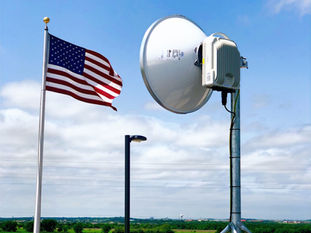
Future-Proofing Networks with Wireless Backhaul Solutions
Jul 24
2 min read
0
15
0
In the rapidly evolving landscape of technology and connectivity, the need for future-proof network solutions has become paramount. Traditional wired networks, while effective, often face limitations such as scalability and right-of-way issues. This is where wireless solutions step in, offering unprecedented flexibility, scalability, and the ability to provide seamless connectivity almost anywhere. Welcome to the era of wireless networks—shaping the future of connectivity.
The Power of Wireless Backhaul Networks

Scalability at its Best
Wireless networks bring scalability to a whole new level. No matter what type of organization, the beauty of wireless lies in its flexibility to adapt to your changing needs. With wireless technology, you can easily scale your network up or down based on demand, without the constraints of physical cables or infrastructure. The agility and adaptability of wireless networks make them a powerful tool for organizations looking to stay ahead in a dynamic market.
Connectivity Without Boundaries
Gone are the days of being restricted by right-of-way issues or geographical limitations. Wireless networks have the incredible ability to provide connectivity almost anywhere, bridging the gap between urban and rural areas. Whether you are setting up a network in a bustling city or a remote countryside, wireless solutions offer an efficient and cost-effective way to establish connectivity. This versatility is especially crucial in today's interconnected world where access to high-speed broadband is no longer a luxury but a necessity.
Leveraging Wireless Backhaul for Broadband Connectivity
Seamless Data Transfer
Wireless backhaul, a key component of wireless networks, plays a crucial role in ensuring robust and reliable broadband connectivity. By using wireless links to connect core networks with remote sites, wireless backhaul enables seamless data transfer over long distances. This not only increases network efficiency but also enhances the overall user experience by reducing latency and improving network speeds. In an age where high-speed data transfer is non-negotiable, wireless backhaul emerges as the backbone of efficient broadband connectivity.
Overcoming Infrastructure Challenges
One of the standout features of wireless backhaul is its ability to overcome traditional infrastructure challenges. Unlike wired solutions that require extensive groundwork and costly installations, wireless backhaul offers a quicker and more cost-effective alternative. By leveraging existing wireless infrastructure or deploying point-to-point microwave links, businesses can sidestep the complexities of laying down physical cables. This not only saves time and resources but also allows for rapid network deployment in areas where traditional methods are impractical.
The Future is Wireless
As we look to the future, the importance of wireless networks in shaping our digital landscape cannot be overstated. From empowering businesses to connect seamlessly with their customers to bridging the digital divide in underserved areas, wireless solutions are paving the way for a more connected world. By embracing the scalability, connectivity, and efficiency of wireless technologies, organizations can future-proof their networks and stay at the forefront of innovation.
In conclusion, wireless networks are not just a means of connectivity but a gateway to a more agile, resilient, and interconnected future. By harnessing the power of wireless solutions, businesses can transform the way they operate, deliver services, and connect with the world around them. Embrace the wireless revolution and unlock a world of possibilities for your network infrastructure.
Remember, the future is wireless—seamless, scalable, and boundless.






